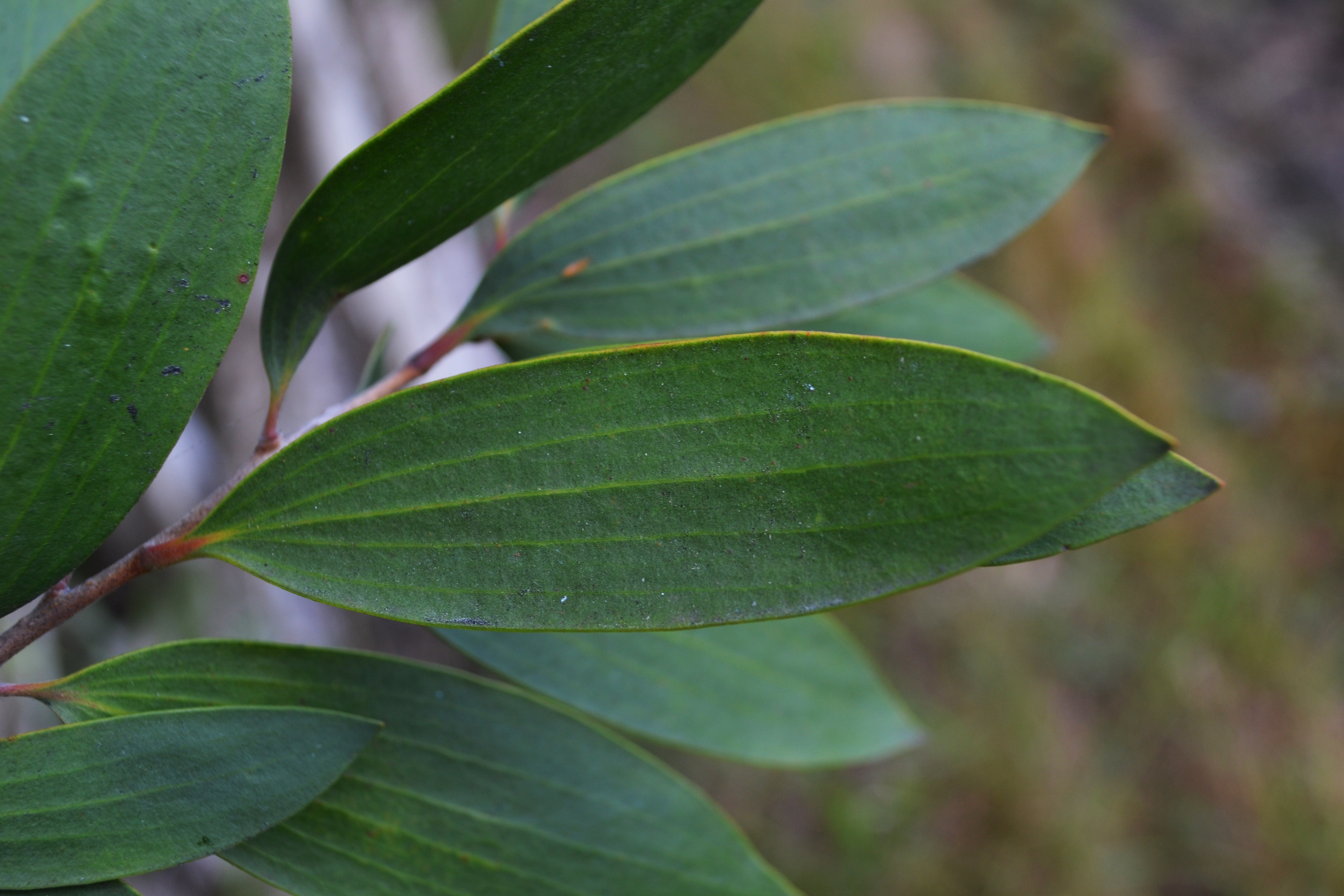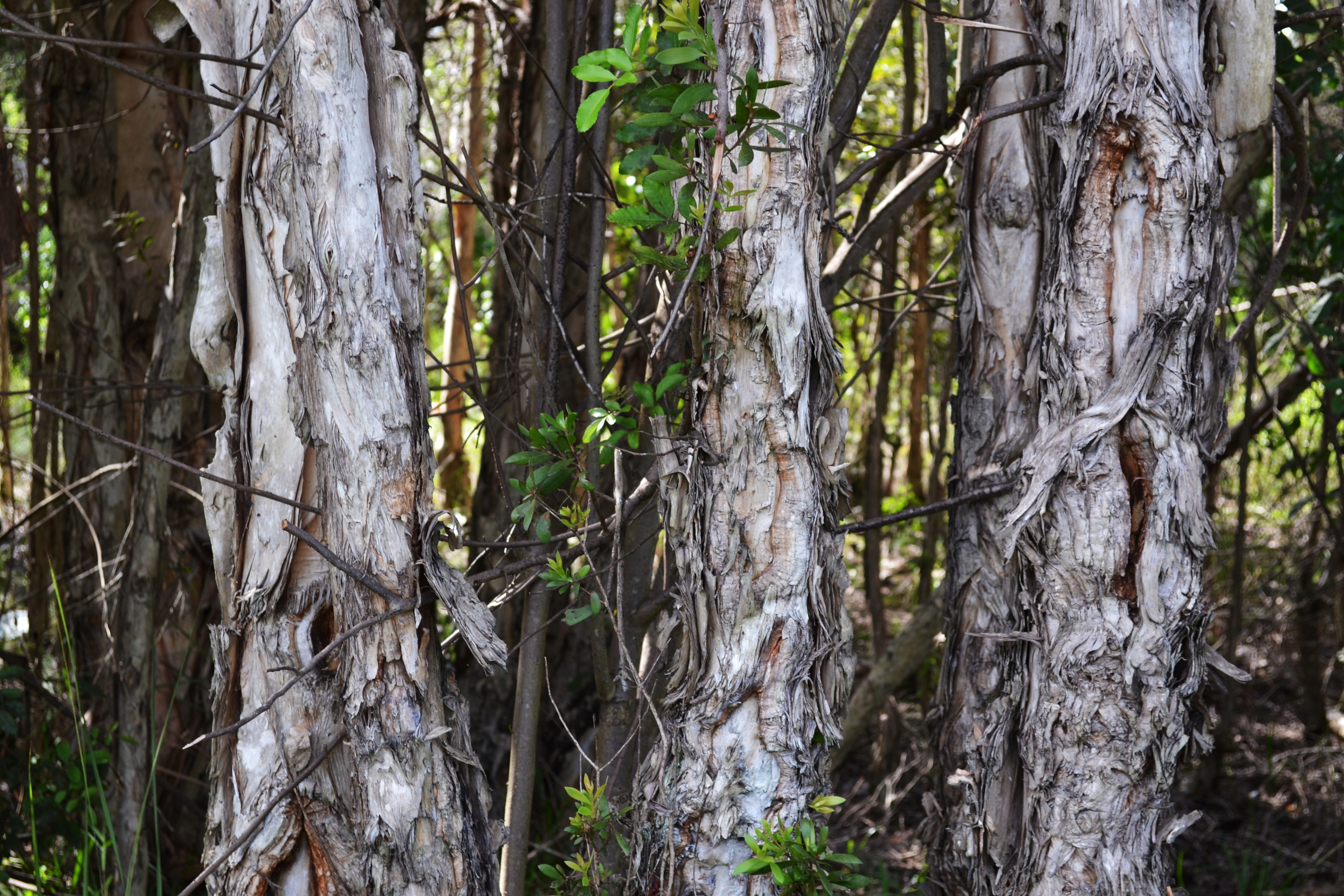Melaleuca
(Cajeput)
Melaleuca quinquenervia
Plant Family: Myrtaceae
Leaves: Alternate, simple, elliptic, to 10 cm, the veins run parallel to the leaf margins.
Bark: Whitish, peeling off in large, loose flakes; the inner bark is reddish-brown.
Flowers: Small, white, with bushy stamens, in bottle-brushed shaped clusters at the ends of the branches; present at any time of year, peaking in winter.
Fruits: Small, sessile, woody capsules in clusters on the branches; each capsule contains hundreds of tiny seeds.
Habitat: Most common on wet disturbed sites, such as along roadsides and canal banks, it also occurs in pinelands, marshes, cypress swamps and sawgrass prairies.
Growth Form: Small to medium-sized fast-growing tree, often in dense single species stands (as shown).
Key Feature: The whitish peeling bark will identify this weedy tree.
Comments: Melaleuca is native to Australia and New Guinea; it is one of the most problematic invasive species in south Florida, covering thousands of acres, including large areas of the Everglades. Recent biological control efforts using insects have had some success.


